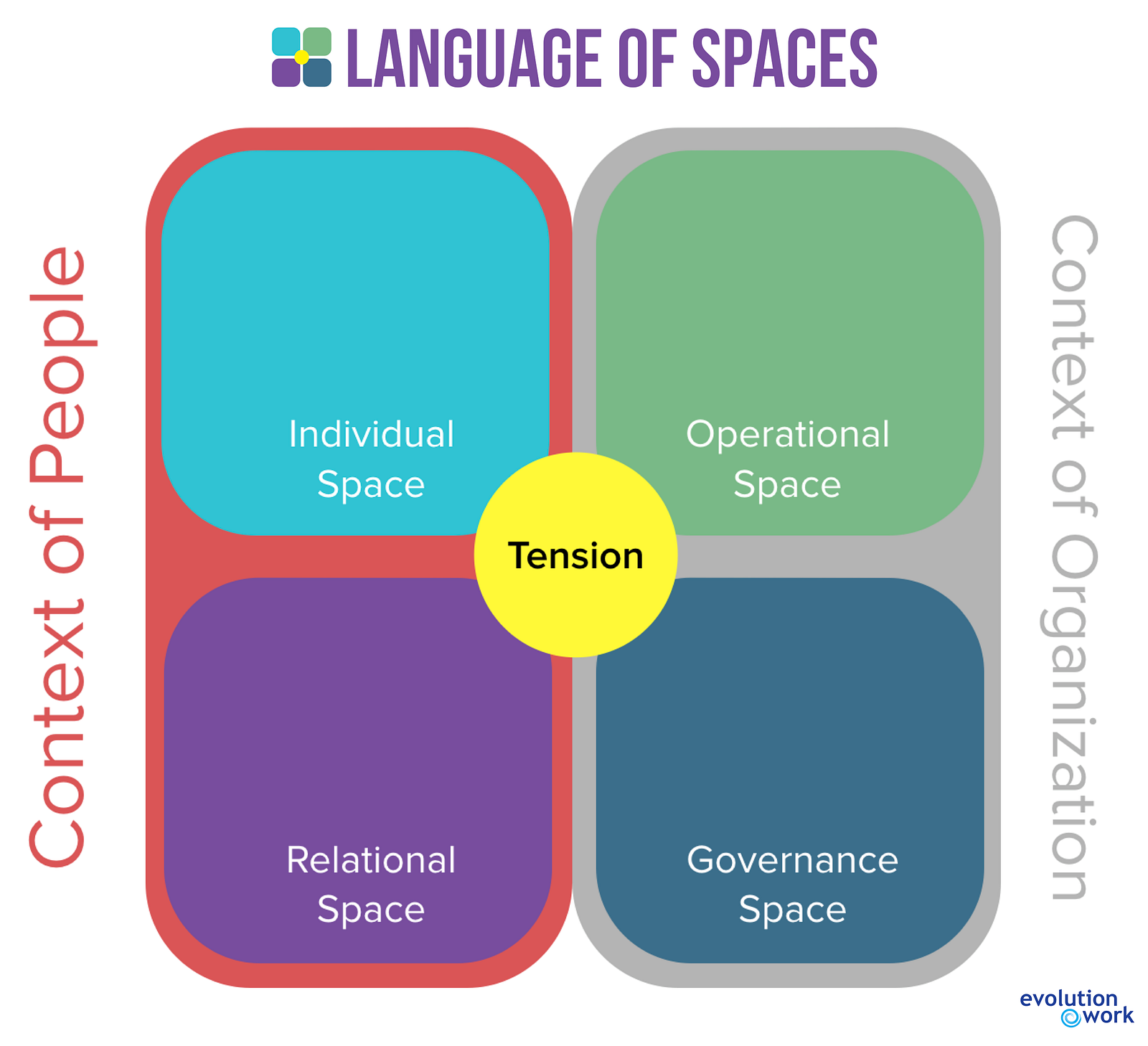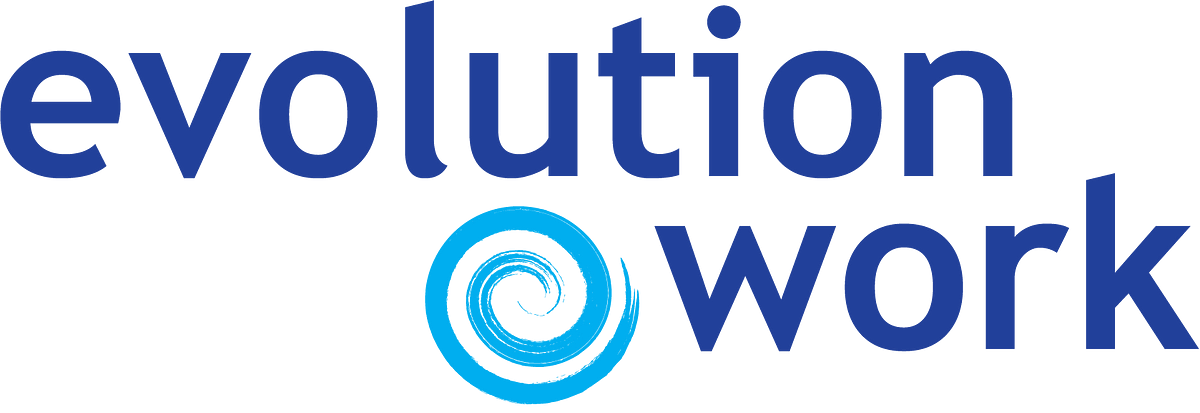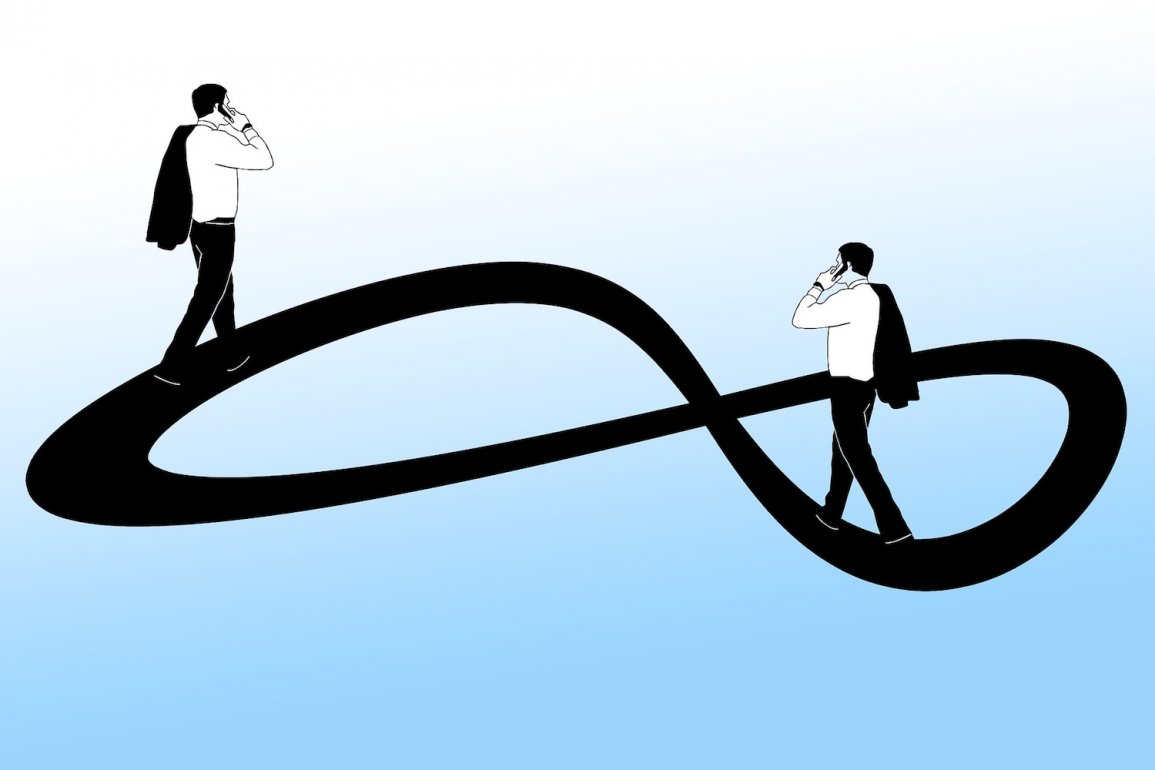By Joel de Jong and originally published in evolutionatwork on medium.com
Part 2: An Introduction to Evolution at Work’s Language of Spaces
As we discussed in the first post, organizations moving into or practicing self-organization are attempting to operate within a paradigm that uses self-organization, as modeled by nature, as the primary organizing principle, and evolution as the process for moving the organization forward.
Four Core Capacities
Evolution at Work’s Language of Spaces framework covers the four core personal capacities that require attention, learning, and practice to successfully operate within this paradigm:
- Differentiation and Integration
- Inner Leadership
- Self-Realization
- Purpose Alignment
In this post we’ll unpack the capacity of Differentiation and Integration, a fundamental principle of evolutionary development.
From Mechanical to Living Systems Worldview
To understand the necessity of Differentiation and Integration, we must first understand that in self-organization we are operating within the context of a living systems worldview—distinctly different from the dominant mechanical worldview that has become ubiquitous and is causing so many problems.
The mechanical worldview gave us many benefits, inventions, productivity, new medicines, and efficiencies with its linear causality and reproducible parts. However, with it being so easily and widely imported and applied, it revealed a shadow side that has lead to widespread dehumanization and environmental degradation.
We can see that the mechanical worldview has outlived its utility by tearing everything down into parts and leaving behind the context and interrelatedness of everything, which can be recovered and renewed when we start working within a living systems worldview.
The real cosmological revolution in living systems is the shift of focus from parts to the whole. This is a real departure from the mechanical cosmology, where the behavior and properties of a whole are seen to be caused by individual parts.—Benjamin Smith, Nathan Senge & Chuck Peters, “The Way of Generativity”
Interconnected Wholes
Instead of seeing the world as being divisible into parts, a living systems worldview sees the world as interconnected wholes that all operate in relationship to one another. No part or whole has an existence or function separate from the whole.
Wholeness is imbedded within natural, self-organizing principles. Each of us is a whole, comprised of whole cells, whole organs, whole systems, that each work autonomously to create the whole person. Expand that principle to the organizations and you have individual parts working autonomously within a larger self-organizing system.
Clear Boundaries
Notice that within the example of the human body, every whole has a very clear boundary and purpose. Each cell exists for a purpose and has an outer membrane that clearly defines where it starts and stops. Organs each have a very clear purpose and exist in a particular physical space.
This distinction of purpose and boundaries is extremely important in the context of self-organization, and we can find endless examples of this in nature. When translating wholeness in living systems to an organizational operating structure, an opportunity is presented to organize and evolve in a similar fashion.
The challenge, however, for people energizing roles in the self-organizing context is continuously learning to differentiate and integrate ongoing tensions between roles—while both holding the complexity of energizing multiple roles, and maintaining the distinction between personal and organizational tensions.
A tension is the energy that arises between the perception of what is now and a desired future state.
The work then becomes the ongoing and relentless practice of articulating and processing tensions while operating within clear roles. This is extremely difficult to do within self-organization where, unlike the linear causality of the mechanical worldview, causality in self-organization is non-linear and complexity is ever-increasing.
In fact, the complexity of holding and processing tensions within the self-organizing context can seem extremely chaotic and frustrating without the internal tools to navigate the terrain.
This is precisely the beauty of practicing the Language of Spaces framework because it helps people process tensions by differentiating and integrating them into multiple contexts and spaces within those contexts—which creates wholeness within the organization and the people.
Evolution at Work’s Language of Spaces framework enables tension processing within the following contexts and spaces:
- Context of People: individual or relational spaces
- Context of Organization: operational or governance spaces

By processing tensions with clear context and space boundaries, it reduces the chaos and noise of a tension. People ultimately find a unique perspective within each space that expresses itself in a specific language.
Reflecting on these perspectives enables people to break down the complexity of the fusion of personal and organizational aspects of a tension, which can then be integrated into requisite decisions, behaviors, skills and mindsets.
Evolutionary processes of self-organization
Germination is the process by which an organism grows from a seed or similar structure. In order for a seed to germinate, it must break open before it can rise again rooted.
Learning the capacity of Differentiation and Integration follows a similar pattern. The tensions are broken down, and through the evolutionary process, opened up, in order for space to be created for the break-through of new perspectives (i.e. growth) to happen.
Autopoiesis refers to a system capable of reproducing and maintaining itself.
Autopoiesis was introduced in 1972 by Chilean biologists Humberto Maturana and Francisco Varela to define the self-maintaining chemistry of living cells. It is this self-creation that is the driving force of all living systems and what we are emulating in self-organization.
Fundamental to the concept of autopoiesis is the innate ability to differentiate and integrate within ever-increasing complexity—precisely the current environment our organizations are operating within today—requiring us to develop and practice deeper ways of being human and organizing work.
What’s Next
Next up in this series on Language of Spaces I’ll be expanding on the following capacities: Inner Leadership, Self-Realization, and Purpose Alignment. Be sure to follow the Evolution at Work publication to be notified when the next articles are live.

Evolution at Work facilitates workshops and training on the four core capacities through one-on-one coaching, single or multi-day public or in-house workshops, and is launching a Language of Spaces Certification program this fall for qualified coaches and consultants.
If you or your organization are on the journey to self-organization and would like to inquire about learning Language of Spaces, please let us know at [email protected] or leave a comment below.
Republished with permission.
Featured Image/graphic link added by Enlivening Edge Magazine.




